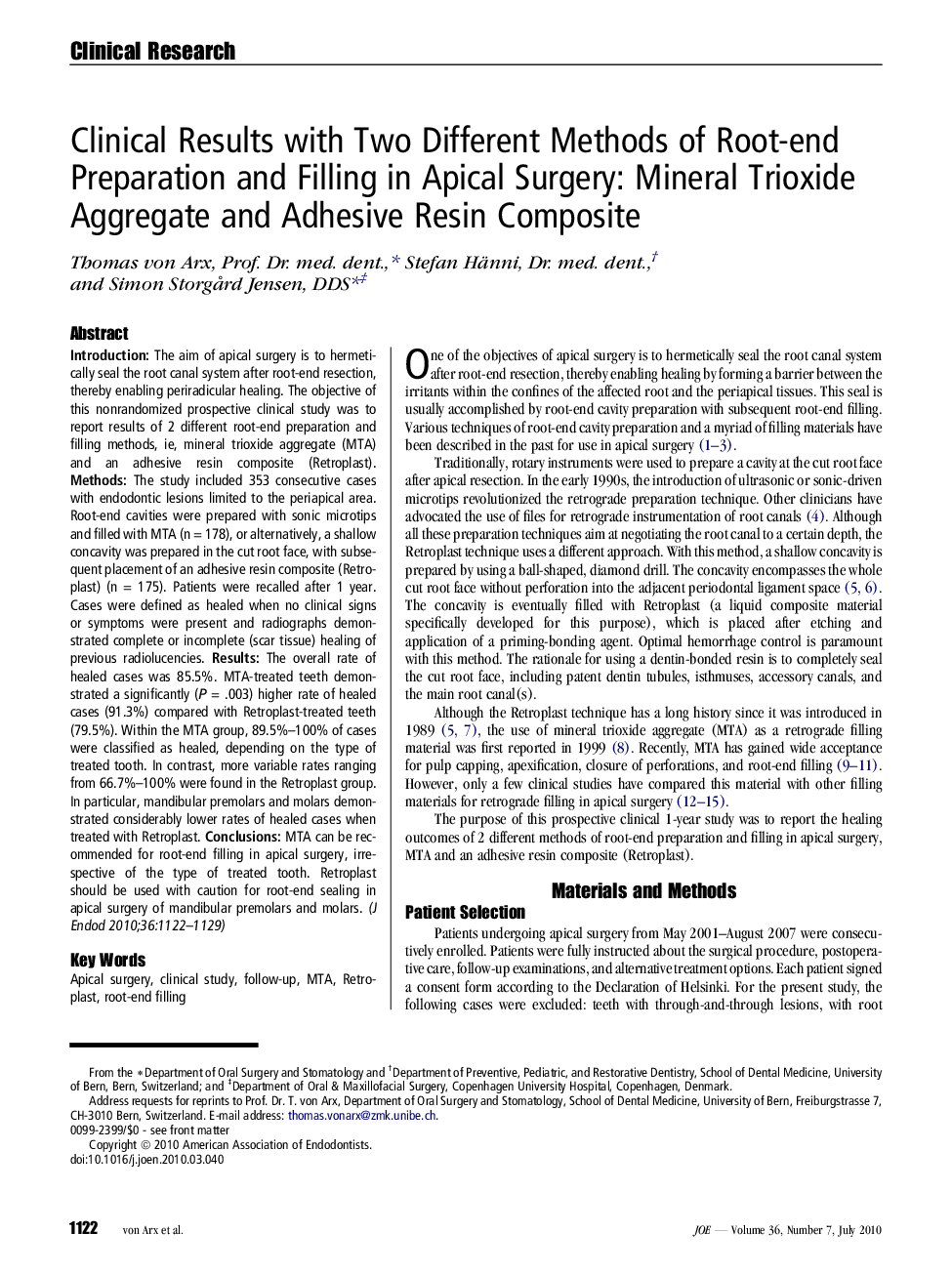| Article ID | Journal | Published Year | Pages | File Type |
|---|---|---|---|---|
| 3147250 | Journal of Endodontics | 2010 | 8 Pages |
IntroductionThe aim of apical surgery is to hermetically seal the root canal system after root-end resection, thereby enabling periradicular healing. The objective of this nonrandomized prospective clinical study was to report results of 2 different root-end preparation and filling methods, ie, mineral trioxide aggregate (MTA) and an adhesive resin composite (Retroplast).MethodsThe study included 353 consecutive cases with endodontic lesions limited to the periapical area. Root-end cavities were prepared with sonic microtips and filled with MTA (n = 178), or alternatively, a shallow concavity was prepared in the cut root face, with subsequent placement of an adhesive resin composite (Retroplast) (n = 175). Patients were recalled after 1 year. Cases were defined as healed when no clinical signs or symptoms were present and radiographs demonstrated complete or incomplete (scar tissue) healing of previous radiolucencies.ResultsThe overall rate of healed cases was 85.5%. MTA-treated teeth demonstrated a significantly (P = .003) higher rate of healed cases (91.3%) compared with Retroplast-treated teeth (79.5%). Within the MTA group, 89.5%–100% of cases were classified as healed, depending on the type of treated tooth. In contrast, more variable rates ranging from 66.7%–100% were found in the Retroplast group. In particular, mandibular premolars and molars demonstrated considerably lower rates of healed cases when treated with Retroplast.ConclusionsMTA can be recommended for root-end filling in apical surgery, irrespective of the type of treated tooth. Retroplast should be used with caution for root-end sealing in apical surgery of mandibular premolars and molars.
